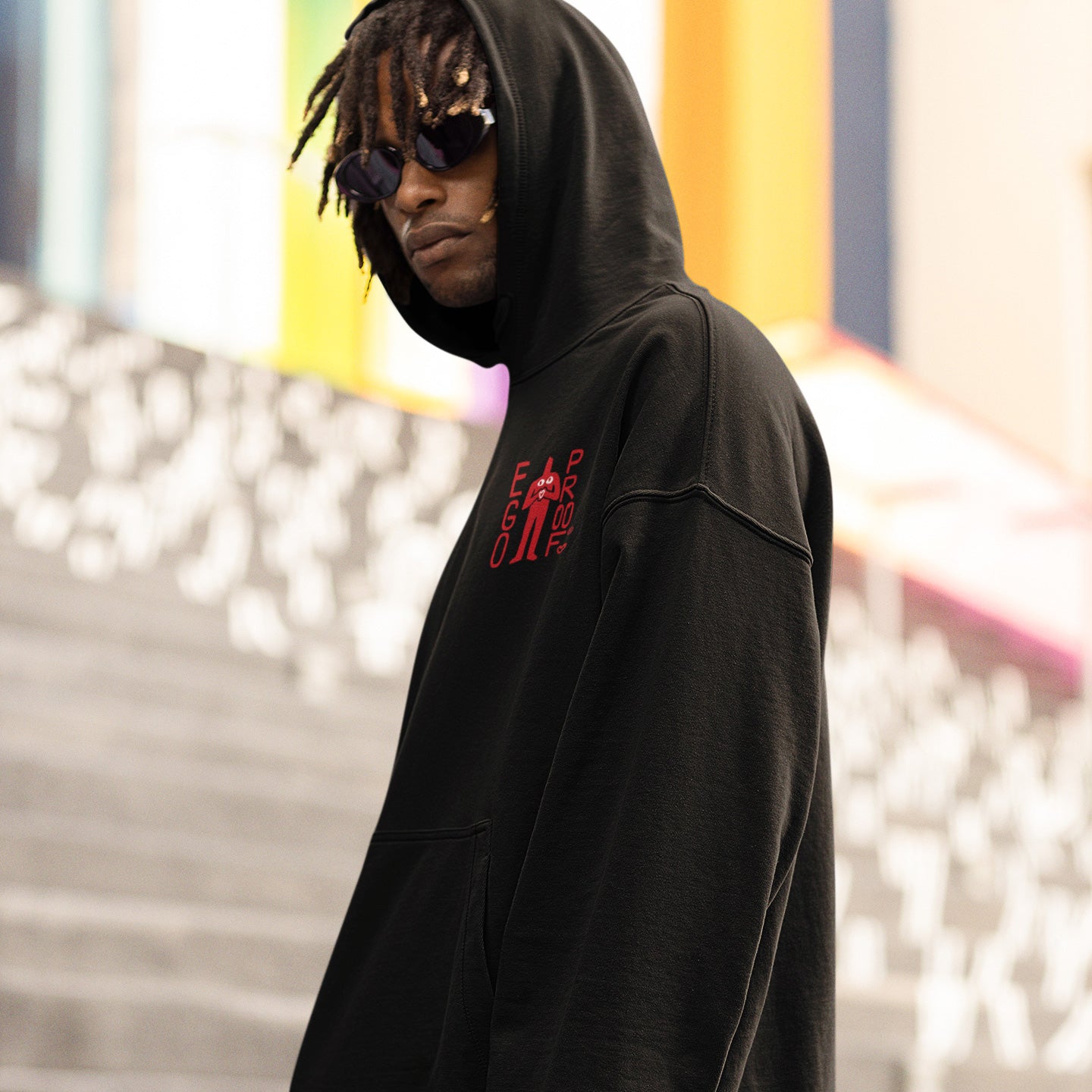
EGOPROOF's Guide to T-Shirt Fabrics
Share
EGOPROOF’s GUIDE TO T-SHIRT FABRICS. We’ve all fallen in love with a graphic t-shirt because the design reflects our personalities. And hey, it looked good in the picture. But then the shirt comes, we put it on, and though the words and images convey what we want, it’s too drapey, not drapey enough, itchy, cheap-looking, or stiff.
In this guide, we rank t-shirt fabrics from worst to best so that you can steer yourself in the right direction:
Spandex
Spandex clings to the body and emphasizes certain areas that the wearer may not want to emphasize. Some athletes swear by spandex though because they want something that clings to their body and doesn’t get in their way when they’re doing their thing. But, and a big but: spandex t-shirts are not as breathable as other fabrics and may cause discomfort or even chafing. They may also show sweat more prominently as well as trap said sweat and moisture, which can cause you to smell. Which is gross. As for those who are thinking of using spandex as compression clothing, it is always a good idea to speak with a healthcare professional first.
Rayon
Unlike spandex, rayon drapes nicely on the body, which can help de-emphasize the areas that spandex highlights. Also known as viscose, rayon comes from wood pulp and bamboo. Though soft, silky, lightweight, and dressier, rayon shrinks, wrinkles, and fades more easily than other types of fabric. Because of its absorbency, it can be difficult to clean and maintain. The production of rayon requires the use of highly toxic chemicals, which can be harmful to the environment and the workers who produce it.
Modal
Modal is more lightweight than rayon. It is made from beech tree pulp, which has a unique softness. Though it’s popular amongst the fashion-conscious, modal has a reputation for pilling and shrinking and is on the pricey side. It’s lightweight, which is great, but the downside is that it’s thin and gets thinner with every wash. Though modal producers are beginning to use more eco-friendly methods, harsh chemicals are used in their production.
Hemp
Hemp is a crop that requires less water, fertilizers, and pesticides, so unlike many other fabrics, hemp is environmentally friendly and sustainable. Hemp fabric is one of the strongest natural fibers. It’s highly breathable and soft to the touch and will not fade quickly but there are downsides: Hemp is prone to wrinkles and provides limitations in terms of color due to the difficulty of drying fiber. In addition to this, hemp t-shirts are expensive due to their high production costs and limited availability.
Polyester
Polyester is a synthetic fabric that is highly durable, extremely lightweight, fade-resistant, and provides moisture-wick. It’s resistant to wrinkles and shrinking as well. Polyester t-shirts are great for doing anything sports-related. Polyester has had a bad reputation because of its damage to the environment, but now RPET -recycled polyester - is created from recycled bottles. Unfortunately, most fashion companies today are still using virgin polyester, and products made with this end up in landfills when there’s no longer a use for them.
Cotton
Cotton is the original OG of t-shirts known for its softness, breathability, and durability. Though it generally has a great reputation, not all cotton gets a high mark: Regular cotton is grown using synthetic chemicals like pesticides and fertilizers, which can have negative health and environmental consequences. It might be cheaper, but it comes at a cost to health and the environment. Organic cotton, though, is grown using methods that are more sustainable and environmentally friendly.
Ultimately, the type of fabric that works for you varies from person to person, and what works for one type of occasion may not work for another.
EGOPROOF’s shirts are made from organic cotton and recycled poly rPET blend that makes the fabric more durable and heavyweight. It saves at least 4 plastic bottles from ending up in a landfill. 60% organic cotton, 40% recycled poly rPET, regular fit.

